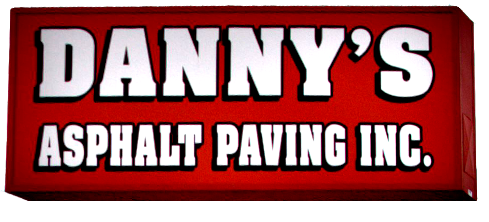Do you have issues with your asphalt pavement?
Asphalt deteriorates over time. Although you can slow this process with proper care and preventative maintenance, factors such as traffic, water, and UV rays will inevitably cause it to start breaking down at some point.
There are all types of damage that can plague asphalt surfaces. Whether you own a parking lot or a commercial driveway, here are eight of the most common asphalt problems and the different ways to resolve these issues!
1. Longitudinal Cracking
Sometimes referred to as linear cracks, longitudinal cracks run in the direction that the pavement was laid. These cracks are typically caused by temperature fluctuations or poor joint structure.
Solution: Your asphalt contractor may recommend crack filling for thin cracks and an overlay for large cracks.
2. Alligator Cracking
Alligator cracking, otherwise known as fatigue cracking, is a load-related issue that can be caused by excessive weight, thin pavement, or a weak base.
Solution: As a temporary fix, your asphalt contractor may recommend applying crack filler. A more permanent solution is to dig down to the base of the problematic area and strengthen the asphalt from the base up.
3. Block Cracking
Block cracking typically occurs due to hardened or poorly mixed asphalt binder. As temperatures fluctuate and harsh conditions take their toll on the pavement, the lack of flexibility from the binder results in square or rectangular cracks.
Solution: Crack filling can be used to fill small block cracks or small areas of block cracks. For large areas, however, your asphalt contractor will likely recommend removing the problematic asphalt and replacing it with a new layer.
4. Edge Cracking
Edge cracks are similar to longitudinal cracks in that they form parallel to the direction of the asphalt. Edge cracking, however, occurs when there is poor drainage or a lack of support at the edges of your pavement.
Solution: Small edge cracks can be fixed with crack filling, while larger cracks may require patching.
5. Slippage Cracking
Often described as “stretch marks”, these groups of shallow cracks suggest that there is an issue with your pavement’s bonding. If neglected, they may develop into potholes in the future.
Solution: There is no effective solution for slippage cracking beyond removing and replacing the asphalt in these areas.
6. Raveling
Raveling is the deterioration of pavement that results in loose gravel and stones. This issue only continues to worsen over time, causing a gradual loss in pavement thickness.
Solution: If raveling only occurs in one area, it may be resolved with asphalt patching. If raveling occurs in a large area or multiple areas, however, any repair other than a full remove and replace is merely a temporary fix.
7. Depressions
Depressions are shallow dips in pavement that may be caused by poor compaction when paving. Depressions can often go unnoticed until rainfall, when standing water is likely to pool in these areas.
Solution: While you can temporarily resolve a depression by patching on top of the existing asphalt, that area may sink again with time. To fully resolve a depression, the asphalt in that area will need to be removed and replaced.
8. Potholes
When alligator cracking is left unaddressed, it will typically result in potholes—steep depressions with sharp edges. The longer these potholes are neglected, the larger they will grow.
Solution: Potholes almost always require full-depth patching. Your asphalt contractor will clean debris and moisture from the area, apply new asphalt mix, and roll it to compaction.
At Danny’s Asphalt Paving, we are able to diagnose asphalt issues, perform repairs, and restoring your pavement to top condition. If your West Texas business has asphalt issues of any kind, make sure you call us today!


Recent Comments